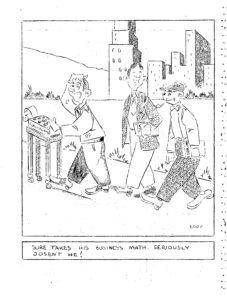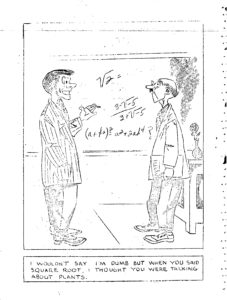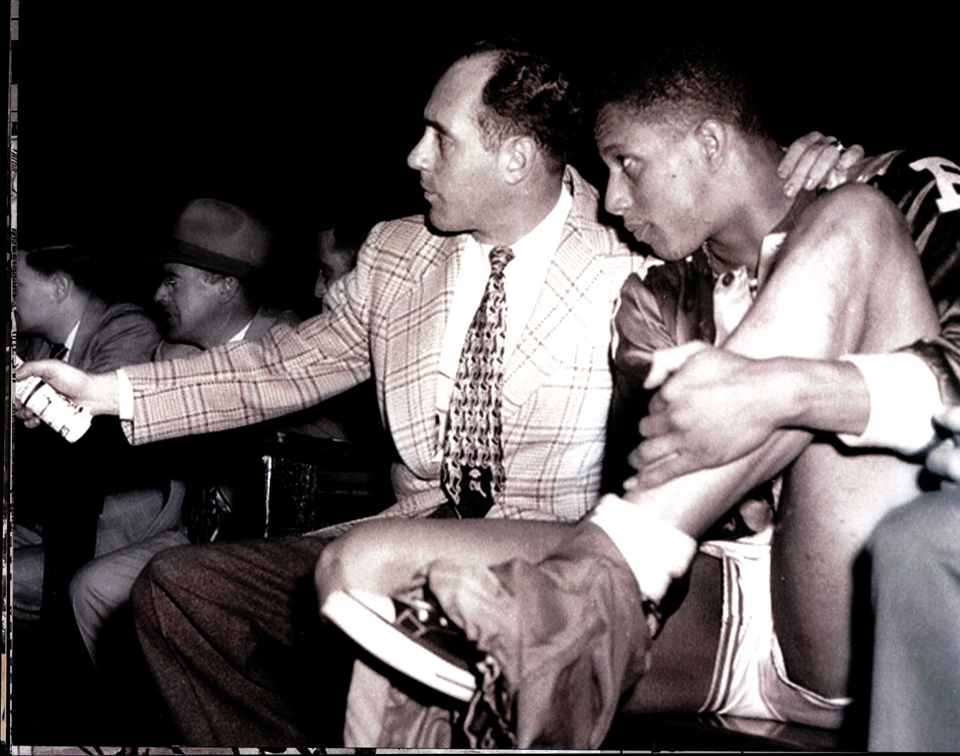

As global war broke out for the second time in a century, the effects were felt around the world. Even on the Bluff, students were sent to the frontlines in battles in both the east and the west.
By Jamie Crow | Staff Writer
“Buy Bonds and Pray for Peace.” That was the request that the Duquesne Durational made in its second issue, published on July 30, 1943. The Duquesne Durational took the place of The Duquesne Duke during World War II, and the issues published over its four-year duration give an interesting snapshot of the time period.
Because of the war, enrollment numbers at Duquesne dropped significantly, so much so that the first issue of the Duquesne Durational, published on July 9, 1943, served more as an advertisement for those who weren’t drafted to enroll in one of Duquesne’s academic programs, citing post-war benefits as the main reason for enrollment.
“Young people with college ability should go to school as long as possible to prepare for the more responsible duties of war and peace,” the publication said. “In the case of girls particularly, the demand for college trained women is great. It will be greater after the war.”
While Duquesne’s primary concern was losing its male student population to the draft, as many of Duquesne’s students were male at the time, there was also worry about losing their female pupils to the war. The university was concerned that the jobs that girls left college for will want them to keep their positions post-war, and, therefore, those students would not return.

Even with the war, students kept themselves entertained.
In order to combat the loss of students to the draft or to jobs benefiting the war effort, Duquesne offered some enticing options for enrollment. Because pharmacy students were deferred from the draft for two years, Duquesne offered students the opportunity to complete a four-year pharmacy degree in two years, provided that they went to school in the summer months as well as the regular academic year. According to the Durational, there was reason to believe that deferments would be made available for students in other programs, as well.
Once the advertisements for enrollment and war bonds were out of the way, the Duquesne Durational became a publication dedicated to providing its readers with campus information and entertainment. One of the most interesting components of the publication, though, is the section that provides readers information on the Duquesne students fighting in the war. The “Dukes In Uniform” section told of homecomings and ship out dates, and, on a sadder note, the section offered condolences for the Duquesne students who lost their lives in the war.

Judging by this comic, math has always been a tough subject.
The “Non-Rationed” section gave information on campus couples, offering some speculation as to who was dating whom. In the March 15, 1945, issue, the theme of the section was the spring fever that everyone seemed to have. Those affected by the warm-weather feelings of romance were Bob Harper and Kay Brett. The publication said that Bob, a drummer, had set aside his drums in favor of his heart, “keeping tempo to a new boogie-woogie rhythm.” Here’s hoping that Bob and Kay’s relationship stayed on beat and thrived even after their college years.
Adding to the publication’s wartime entertainment department was the language used in its articles. The Jan. 20, 1944, issue, for instance, seemed very excited about the prospect of finals week.
“Hear Ye! Hear Ye! Final exams will take place from February 24 to 27,” the Durational said. “Or has the awful truth leaked out already??? Sorry, no Durational next week, but we’ll be back better than ever the first week of the new semester.”
Also worth noting here is the fact that finals week took place at the end of February, which is around the time that we have midterms today. It’s unclear as to why the semester ended so early; it could be that Duquesne was on a year-round schedule during the war as opposed to the traditional two semester year that we have today.
Times have certainly changed for our print publication since the 1940s. While the Duquesne Durational was a wartime publication, the writers seemed to make the best of their situation by still informing and entertaining their readers. We hope that we’ve carried that same tradition into the 21st century.




